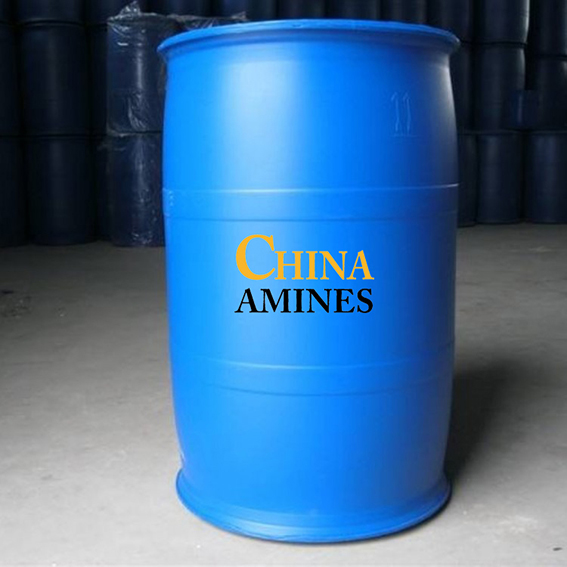1. Chemical Structure and Properties
Molecular Formula: C₇H₁₂O₂
Structural Formula:
CH₂=CHCOO(CH₂)₃CH₃
A vinyl ester composed of an acrylic acid backbone esterified with n-butanol.
Physical Properties:
Appearance: Clear, colorless liquid with a sharp, acrid odor.
Boiling Point: 145–149°C; Density: 0.89–0.90 g/cm³; Vapor Pressure: 4 mmHg at 20°C.
Solubility: Immiscible with water; fully miscible with alcohols, ethers, and hydrocarbons.
Chemical Properties:
Polymerization: Highly reactive; undergoes free-radical polymerization to form polybutyl acrylate.
Hydrolysis Stability: Stable under neutral conditions; hydrolyzes in strong acids/bases to acrylic acid and butanol.
Flammability: Flammable (flash point: 35°C; autoignition temperature: 295°C).
2. Industrial Applications
Polymers & Plastics:
Copolymer Production: Key monomer for acrylic resins, adhesives, and impact modifiers (e.g., ABS plastics).
Coatings & Adhesives:
Emulsion Polymers: Used in water-based paints, pressure-sensitive adhesives, and textile finishes.
Consumer Products:
Sealants & Caulks: Enhances flexibility and weather resistance in construction materials.
Chemical Synthesis:
Intermediate: Produces specialty esters for lubricants and surfactants.
3. Safety and Toxicology
Acute Exposure:
Inhalation (≥50 ppm): Irritates respiratory tract; causes headaches and dizziness (TLV-TWA: 10 ppm).
Skin Contact: Causes irritation and dermatitis (rabbit skin LD₅₀: >2,000 mg/kg); possible sensitization.
Ingestion: Moderately toxic (oral LD₅₀ rat: 3,700 mg/kg); gastrointestinal damage.
Chronic Effects:
Carcinogenicity: Not classified by IARC; limited evidence of genotoxicity (Ames test negative).
Reproductive Toxicity: No teratogenicity observed in OECD 414 studies.
Protection Measures:
PPE: Nitrile gloves, vapor respirators, and explosion-proof ventilation.
Storage: Store in flame-resistant containers with inhibitors (e.g., hydroquinone) to prevent polymerization.
4. Environmental and Regulatory Compliance
Environmental Impact:
Biodegradability: Slow (OECD 301F: <30% in 28 days); persistent in aquatic systems.
Aquatic Toxicity: LC₅₀ (fish, 96h): 5–10 mg/L; EC₅₀ (daphnia, 48h): 2–5 mg/L.
Bioaccumulation: Low (log Kow: 2.4).
Regulatory Frameworks:
EU:
REACH: Registered (EC 203-466-3); CLP classified as Flam. Liq. 2 (H225) and Acute Tox. 4 (H302).
USA:
EPA: Regulated under TSCA; listed as a VOC under Clean Air Act.
OSHA: Permissible Exposure Limit (PEL): 10 ppm (8-hour TWA).
China:
GB 13690-2009: Classified as Hazardous Chemical (Class 3.2).
Waste Management:
Incinerate with VOC abatement systems; landfill disposal prohibited.
5. Case Studies and Application Insights
Case 1: High-Performance Adhesives (3M, 2023):
Challenge: Develop a low-VOC adhesive for automotive interiors.
Solution: Butyl acrylate-based copolymer with 30% bio-derived content.
Result: Achieved 40% lower VOC emissions (ASTM D6886) and met GMW15634 standards.
Case 2: Sustainable Textile Coatings (DuPont, 2022):
Process: Replaced solvent-based coatings with waterborne butyl acrylate emulsions.
Impact: Reduced chemical waste by 50% and complied with OEKO-TEX® ECO PASSPORT.
Comparative Analysis:
Butyl Acrylate vs. Ethyl Acrylate:
Pros: Higher hydrophobicity; better adhesion to non-polar substrates.
Cons: Higher flammability and acute toxicity.
Butyl Acrylate vs. Styrene-Butadiene Rubber (SBR):
Pros: Superior UV resistance and flexibility at low temperatures.
Cons: SBR offers lower cost and higher tensile strength.
Specifications:
Butyl acrylate is an organic compound with the formula C4H9O2CCH=CH2. A colorless liquid, it is the butyl ester of acrylic acid. It is used commercially on a large scale as a precursor to poly(butyl acrylate). Especially as copolymers, such materials are used in paints, sealants, coatings, adhesives, fuel, textiles, plastics, and caulk.


